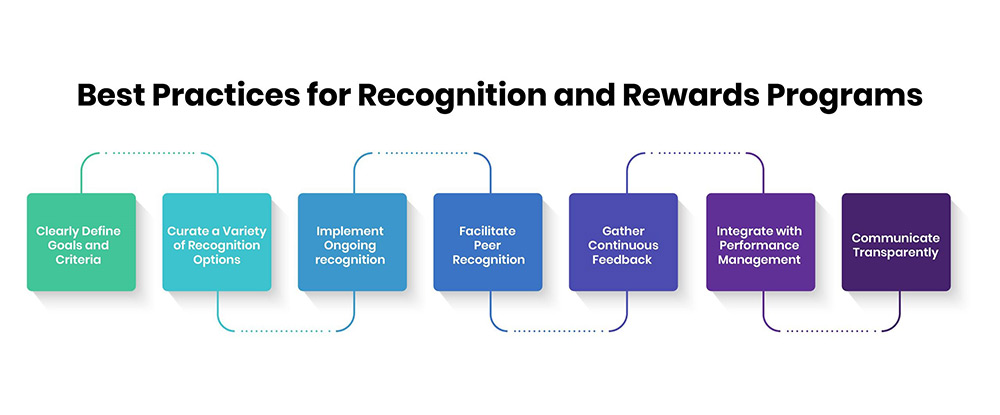
The success of any organization hinges on its most valuable asset - its talent. To thrive in today's competitive business landscape, companies must effectively manage their workforce through strategic talent management. A core component of such efforts revolves around nurturing an engaged and motivated team through recognition and rewards initiatives.
What is Talent Management?
Talent management refers to the comprehensive approach organizations take to attract, develop, engage, and retain top talent. It involves acquiring a deep understanding of the workforce through data analysis, establishing robust talent pipeline strategies, implementing learning and development opportunities, fostering career progression, and cultivating a thriving company culture where employees are empowered to unleash their full potential.
At its core, talent management focuses on strengthening organizational capabilities and competitiveness through strategic human capital management. It aims to ensure companies have the right people with the right skills in the right roles to execute business strategies and objectives successfully.
Several talent management certifications are available for HR professionals seeking to enhance their skills in this crucial domain and optimize talent processes. Data-driven talent management further depends on tools that offer workforce visibility and intelligence through metrics.
Role of Employee Recognition and Rewards in Talent Management
Employee recognition and rewards play a pivotal role within the talent management realm. They are powerful motivators that directly impact employee engagement, satisfaction, and retention - all of which are top priorities for modern organizations.
Recognition serves to acknowledge achievements, behaviors, and contributions that are aligned with organizational values. It expresses appreciation for employees' efforts and makes them feel valued. Recognition reinforces positive behaviors through meaningful feedback.
Rewards supplement recognition by providing incentives. They offer tangible benefits, whether financial or non-financial, to encourage goals accomplishment and nurture a performance-driven culture. Rewarding top performers attracts and retains key talent.
Together, recognition and rewards promote loyalty, boost morale, fuel productivity, and strengthen company culture - leading to improved business outcomes. They help create a nourishing environment where employees are motivated to contribute their fullest abilities.
Recognition and Rewards Best Practices
To maximize effectiveness, recognition and rewards programs require careful planning and implementation. Organizations must leverage these tools strategically according to evolving workforce needs and preferences. Here are some best practices:

-
Clearly Define Goals and Criteria
Organizations must start by outlining specific objectives for their recognition and rewards programs that are closely aligned with business goals and desired company culture. Determining role-specific criteria makes the programs more relevant and motivational.
Employees should understand exactly what kinds of contributions, competencies, or achievements will earn acknowledgment according to their function and responsibilities. Criteria may include metrics like productivity, customer satisfaction, collaboration, innovation, development of skills, and embodiment of core company values.
-
Curate a Variety of Recognition Options
To engage diverse workforces, programs need an assortment of acknowledgment approaches. Simple gestures go a long way, from verbal praise and handwritten notes of thanks to peer nods on internal forums and online shoutouts on company platforms. Tangible rewards also have value, whether it be cash bonuses, extra vacation time, gifts, or offers of career advancement opportunities. A balanced blend of appreciation styles ensures different preferences and personalities feel recognized.
-
Implement Ongoing recognition
Meaningful recognition depends on consistency and thoughtfulness. While standout accomplishments deserve special commendation, everyday efforts build organizational success as well. Regular, sincere feedback reinforces desired conduct continuously. Timely notices following projects or victories also amplify positivity while memories remain fresh. Both extraordinary and mundane achievements deserve acknowledgement to cultivate sustained drive.
-
Facilitate Peer Recognition
Peer-to-peer gestures strengthen community and support. Allowing employees to shower colleagues with appreciation through online communities or in-person cafes spreads appreciation more widely. This fosters bonding, collaboration, inclusive excellence and camaraderie critical to productivity and retention. When peers commend each other’s efforts and contributions, it enhances team spirit across functions and levels.
-
Gather Continuous Feedback
Ongoing engagement ensures relevance as needs evolve. Pulse surveys and small discussion groups provide a sounding board for preferences. As demographics and expectations shift over time, recognizing such changes keeps motivation high. Programs showing flexibility by modernizing based on recurrent input demonstrate authentic care for wellbeing. This fosters trust that each person’s experience matters to the organization.
-
Integrate with Performance Management
Recognition most resonates when tied to formal processes like periodic reviews. Linking distributions of rewards to documented assessments of goal accomplishment, competency development and upholding core values strengthens institutions. It reinforces that desired conduct forms the backbone of career progression and fulfillment. This systematic alignment keeps appreciation meaningful long-term.
-
Communicate Transparently
Regular updates spread understanding regarding what the company truly cherishes. Prominent promotion of nomination details, selection processes and success stories ensures employees feel valued and incentivized. Companies guiding accomplishments with clear and consistent communication cultivate pride while retaining top performers. Transparency fortifies psychological safety and boosts productivity.
Real-World Examples of Effective Recognition and Reward Strategies
Some real-world examples of strategically woven recognition and rewards initiatives fueling talent management include:
-
Monthly “Employee of the Month” recognition celebrating top contributors
An effective example of strategic employee recognition is implementing an "employee of the month" program. This structured initiative acknowledges exceptional employee performance on a monthly basis.
Criteria can include productivity, teamwork, customer satisfaction, and other meaningful metrics. The chosen employee is formally announced and presented with a certificate, plaque or trophy along with a small gift. Most importantly, their achievements and demonstrated behaviors are communicated company-wide to motivate others. This recognition reinforces desired conduct while fostering healthy competition amongst colleagues.
-
Anniversary or service milestones acknowledged with gifts/experiences
A meaningful way to reward tenure is celebrating work anniversaries and service milestones. Gift giving at anniversary intervals, such as every 5 years of employment, is a gesture that shows long-standing loyalty is valued. Presents can be experiences like a dinner or event tickets rather than physical items.
To make it more personalized, milestone achievements unlock preferential treatment such as eligibility for promotions, flexible schedules or mentorship roles. These rewards strengthen employer commitment through quality recognition over the long-term.
-
Peer-submitted “Kudos” shared digitally and during team meetings
Implementing an internal peer-to-peer recognition feature allows colleagues to formally appreciate one another's efforts. For example, a digital 'kudos' board showcases employee shoutouts and compliments submitted by peers. Highlighting these testimonials raises morale and fosters collaboration. Managers can also promote the 'kudos' shared each period during scheduled team huddles. Peer recognition is a powerful motivator that strengthens relationships across departments.
-
Spotlighting remote employee highlights in internal newsletters
To ensure off-site talent still feels recognized, remote employee achievements should be celebrated too. For example, a monthly internal newsletter can profile standout remote worker contributions. Showcasing success stories maintains connectivity to organizational culture and goals. It reinforces that performance and efforts, regardless of location, are equally acknowledged. Leveraging digital communications amplifies visibility company-wide so colleagues stay informed of each other's accomplishments.
-
Offering professional development allowances or certifications as rewards
Strategic talent management involves investing in employees' career growth. Providing professional development allowances shows support for ongoing skills enrichment. Allowances can fund continued education like courses or certification programs aligned with professional interests and goals. Earning relevant certifications as a tangible reward inspires learners to expand competencies. It communicates that skills mastery and staying knowledgeable are valued traits that strengthen individual roles and the wider organization over time.
-
Granting special leadership privileges/responsibilities to high achievers
Top performers who exemplify desired conduct and results warrant leadership fast-tracking. A strategic approach involves identifying high-potential talent and empowering them. For example, high achievers may earn privileges like leading special projects, guiding new recruits or representing the firm at industry events. These expanded responsibilities signal confidence in an employee's abilities while satisfying career aspirations. It sets an example that exemplary work can unlock accelerating career opportunities.
Leveraging Recognition and Rewards for Talent Management Success
When planned and administered thoughtfully according to best practices, recognition and rewards yield significant returns for both the organization and its workforce. They bolster talent management strategies in meaningful ways.
Recognition keeps employees invested and proud of their roles, inspiring continued excellence. It affirms individual contributions to the company's purpose in an impactful manner. Recognition nurtures psychological safety and radical candor within teams.
Rewards encourage growth-oriented behaviors and accomplishments aligned with objectives. They attract top outside talent seeking motivating opportunities. Tangible rewards foster performance-driven cultures where aspirations are met with support.
Together, recognition and rewards maximize employee engagement and morale. They promote retention of high-caliber talent demonstrating exemplary skills, leadership, initiative, and alignment with the corporate vision. Low turnover preserves institutional knowledge and drives continuity.
Recognition also strengthens employer brand perception externally as a great place to work. It enhances the attraction of qualified candidates needed to fulfill talent needs. A best-in-class workforce equipped with 21st-century skills firmly positions the organization competitively.
In the highly virtual and dispersed future of work, recognition remains critical for maintaining connectivity and culture. Digital tools now facilitate more meaningful and scalable appreciation experiences. Rewards adapt to hybrid preferences around flexibility, well-being, and learning.



